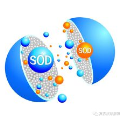
Salient object detection (SOD) is viewed as a pixel-wise saliency modeling task by traditional deep learning-based methods. A limitation of current SOD models is insufficient utilization of inter-pixel information, which usually results in imperfect segmentation near edge regions and low spatial coherence. As we demonstrate, using a saliency mask as the only label is suboptimal. To address this limitation, we propose a connectivity-based approach called bilateral connectivity network (BiconNet), which uses connectivity masks together with saliency masks as labels for effective modeling of inter-pixel relationships and object saliency. Moreover, we propose a bilateral voting module to enhance the output connectivity map, and a novel edge feature enhancement method that efficiently utilizes edge-specific features. Through comprehensive experiments on five benchmark datasets, we demonstrate that our proposed method can be plugged into any existing state-of-the-art saliency-based SOD framework to improve its performance with negligible parameter increase.
翻译:传统的深层学习方法认为,显性天体探测(SOD)是一种具有像素特征的典型任务。目前SOD模型的局限性在于对像素间信息的利用不足,这通常导致边缘区域附近的分化不完善和空间一致性低。正如我们所显示的那样,使用突出的掩体作为唯一的标签是不最佳的。为了解决这一局限性,我们提议采用一种基于连通性的方法,称为双边连通网络(BiconNet),使用连接面罩和突出的遮罩作为有效模拟像素间关系和突出对象特征的标签。此外,我们提议采用双边投票模块来强化输出连接图,并采用新的边缘特征增强方法,有效利用特定边缘特征。通过对五个基准数据集的全面实验,我们证明我们提出的方法可以插进任何现有最先进的显著的SOD框架,用微量参数增加来改进其性能。



